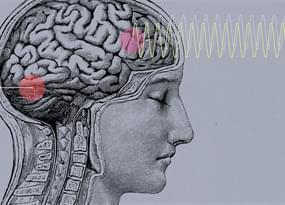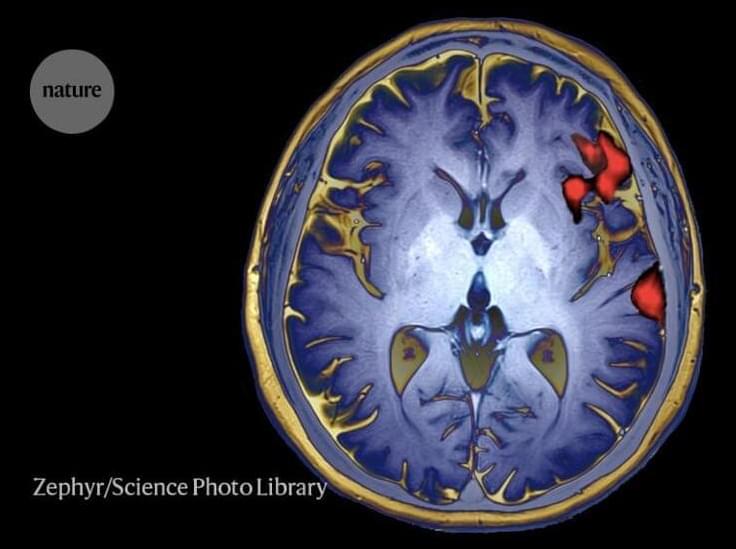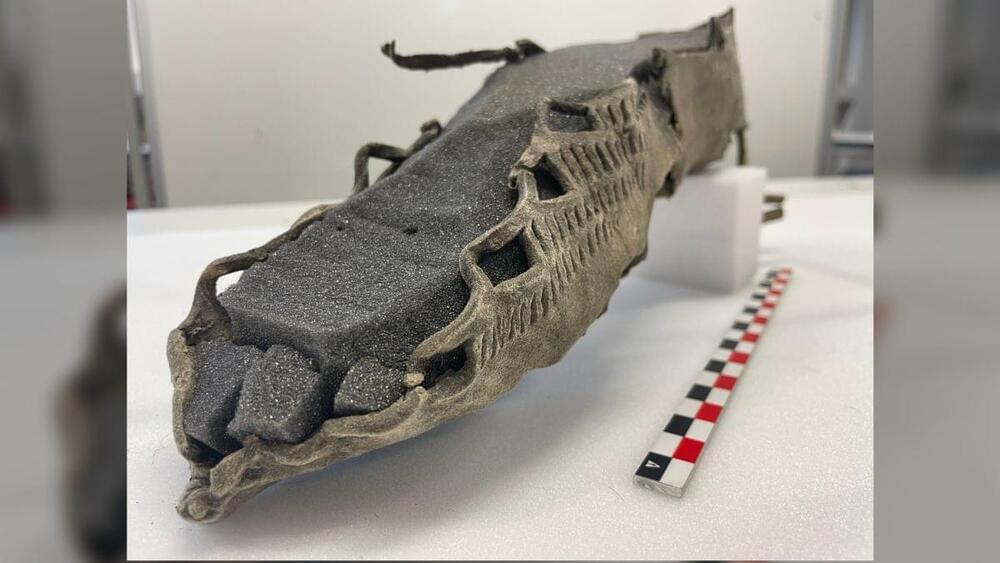To create muons, accelerator operators at Fermilab send trillions of protons through a series of sophisticated machines:
For the Muon g-2 experiment, researchers create billions of muons to study their surprising properties.
To create muons, accelerator operators at Fermilab send trillions of protons through a series of sophisticated machines:
For the Muon g-2 experiment, researchers create billions of muons to study their surprising properties.

FALLS CHURCH, Va. (AP) — The Arlington County Board gave unanimous approval Saturday to Amazon’s plans to build a unique, helix-shaped tower as the centerpiece of its emerging second headquarters in northern Virginia.
Amazon announced the plans in February 2021 for the eye-catching, 350-foot tower to anchor the second phase of its redevelopment plans. The new office towers will support a second headquarters for Amazon that is expected to welcome more than 25,000 workers when it’s complete.
The helix is one of several office towers granted approval, but the helix stands out. The spiral design features a walkable ramp wrapping around the building with trees and greenery planted to resemble a mountain hike.
Joe Biden has been accused of having “no idea” after he misunderstood a journalist’s question about the public health authority ‘Title 42’ and instead begun speaking about a Department of Justice appeal of airplane mask mandates.

𝙉𝙚𝙪𝙧𝙤𝙨𝙘𝙞𝙚𝙣𝙩𝙞𝙨𝙩𝙨 𝙝𝙖𝙫𝙚 𝙡𝙤𝙣𝙜 𝙖𝙨𝙥𝙞𝙧𝙚𝙙 𝙩𝙤 𝙪𝙣𝙙𝙚𝙧𝙨𝙩𝙖𝙣𝙙 𝙩𝙝𝙚 𝙞𝙣𝙩𝙖𝙣𝙜𝙞𝙗𝙡𝙚 𝙥𝙧𝙤𝙥𝙚𝙧𝙩𝙞𝙚𝙨 𝙤𝙛 𝙩𝙝𝙚 𝙢𝙞𝙣𝙙. 𝙊𝙪𝙧 𝙢𝙤𝙨𝙩 𝙩𝙧𝙚𝙖𝙨𝙪𝙧𝙚𝙙 𝙘𝙚𝙧𝙚𝙗𝙧𝙖𝙡 𝙦𝙪𝙖𝙡𝙞𝙩𝙞𝙚𝙨, 𝙡𝙞𝙠𝙚 𝙩𝙝𝙚 𝙖𝙗𝙞𝙡𝙞𝙩𝙮 𝙩𝙤 𝙩𝙝𝙞𝙣𝙠, 𝙬𝙧𝙞𝙩𝙚 𝙥𝙤𝙚𝙩𝙧𝙮, 𝙛𝙖𝙡𝙡 𝙞𝙣 𝙡𝙤𝙫𝙚 𝙖𝙣𝙙 𝙚𝙫𝙚𝙣 𝙚𝙣𝙫𝙞𝙨𝙞𝙤𝙣 𝙖 𝙝𝙞𝙜𝙝𝙚𝙧 𝙨𝙥𝙞𝙧𝙞𝙩𝙪𝙖𝙡 𝙧𝙚𝙖𝙡𝙢, 𝙖𝙧𝙚 𝙖𝙡𝙡 𝙜𝙚𝙣𝙚𝙧𝙖𝙩𝙚𝙙 𝙞𝙣 𝙩𝙝𝙚 𝙗𝙧𝙖𝙞𝙣. 𝘽𝙪𝙩 𝙝𝙤𝙬 𝙩𝙝𝙚 𝙨𝙦𝙪𝙞𝙨𝙝𝙮, 𝙥𝙞𝙣𝙠𝙞𝙨𝙝-𝙜𝙧𝙖𝙮, 𝙬𝙧𝙞𝙣𝙠𝙡… See more.
The Neuro-Network.
𝐌𝐚𝐩𝐩𝐢𝐧𝐠 𝐭𝐡𝐞 𝐛𝐫𝐚𝐢𝐧 𝐭𝐨 𝐮𝐧𝐝𝐞𝐫𝐬𝐭𝐚𝐧𝐝 𝐭𝐡𝐞 𝐦𝐢𝐧𝐝
𝙉𝙚𝙬 𝙩𝙚𝙘𝙝𝙣𝙤𝙡𝙤𝙜𝙮 𝙞𝙨 𝙚𝙣𝙖𝙗𝙡𝙞𝙣𝙜 𝙣𝙚𝙪𝙧𝙤𝙨𝙘𝙞𝙚𝙣𝙩𝙞𝙨𝙩𝙨 𝙩𝙤 𝙢𝙖𝙠𝙚 𝙞𝙣𝙘𝙧𝙚𝙖𝙨𝙞𝙣𝙜𝙡𝙮 𝙙𝙚𝙩𝙖𝙞𝙡𝙚𝙙 𝙬𝙞𝙧𝙞𝙣𝙜 𝙙𝙞𝙖𝙜𝙧𝙖𝙢𝙨 𝙩𝙝𝙖𝙩 𝙘𝙤𝙪𝙡𝙙 𝙮𝙞𝙚𝙡𝙙 𝙣𝙚𝙬 𝙞𝙣𝙨𝙞𝙜𝙝𝙩𝙨 … See more.
New technology is enabling neuroscientists to make increasingly detailed wiring diagrams that could yield new insights into brain function.
By Monique Brouillette.
CG animation of amazing zoom to macro view to the “quantum world”, shown on an approximate scale of the reality of physics…


Could SpaceX be heading to Uranus next? The National Academies of Sciences, Engineering, and Medicine seems to think it should. The organization has released its latest decadal survey of planetary science and astrobiology. According to a report by Teslarati published on Wednesday, the survey hints that NASA should undertake a flagship mission to Uranus on SpaceX’s Falcon Heavy rocket.
The Uranus Orbiter and Probe
The mission is not entirely new. Called the Uranus Orbiter and Probe (UOP), the proposal has been under work for several years by a team that includes scientists from NASA, the University of California, and Johns Hopkins University. Now, with SpaceX’s Falcon Heavy rocket, the researchers feel they have the technology to make their long-held dream a reality.


This is not the first successful research on de-ageing cells. Earlier, Shinya Yamanaka, a Nobel prize-winning stem cell researcher, genetically reprogrammed the mouse skin cells and turned them into induced pluripotent stem cells, or iPSCs, back in 2006. These cells type had the potential to form any cell type in the body. Yamanaka’s method took 50 days and completely reprograms cells to the biological age of an embryo. Gill’s method only took 13 days.
In a statement, Gill said, “Our results represent a big step forward in our understanding of cell reprogramming. We have proved that cells can be rejuvenated without losing their function and that rejuvenation looks to restore some function to old cells.”
